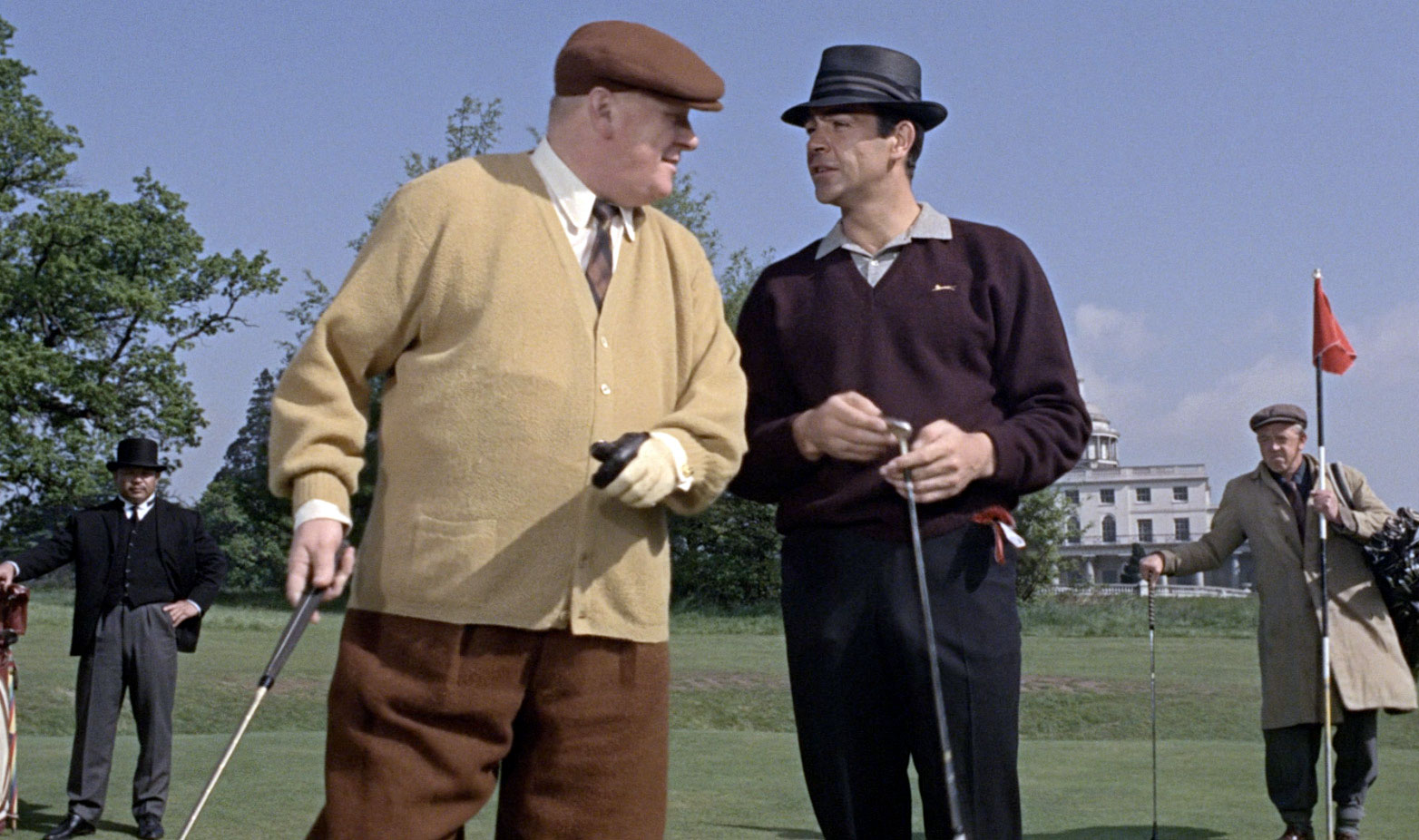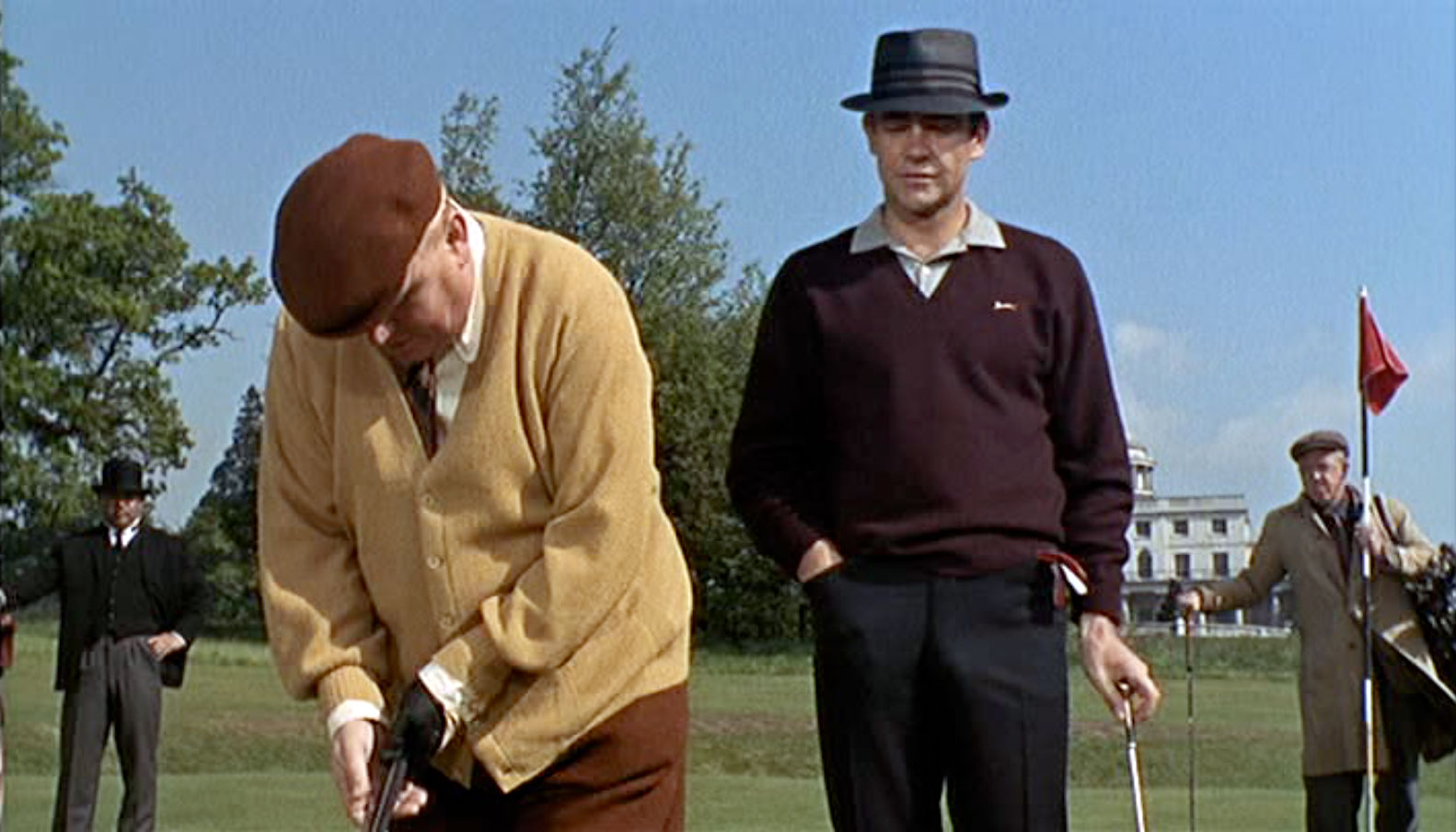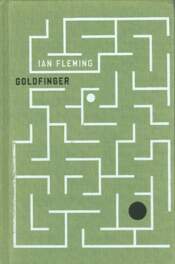
Image via The Suits of James Bond
With the latest James Bond movie, Spectre, starring Daniel Craig in theaters now, Classics of Golf is proud to put the spotlight on Ian Fleming’s Goldfinger (1959), the seventh in the famous spy series, and one of the key golf-related fiction books in our library.
Now you may ask, why is a James Bond novel in the Classics of Golf library at all, let alone being spotlighted. It’s because one of the key scenes in the movie has been described by many as the best golf scene ever to take place on film.
In the Publisher’s Bulletin, Classics of Golf founder, Robert Macdonald wrote that when golf is used in novels it usually appears as background or atmosphere and is rarely central to the plot. The golf in Goldfinger is different. It is vital to both character development and the plot of the book.
Goldfinger opens with an acquaintance of Bond meeting 007 at a Miami airport and requesting that he observe a two-handed Canasta game between himself and the eponymous villain of the novel, Auric Goldfinger. Bond’s friend suspects Goldfinger of cheating, and offers to pay Bond to confirm his suspicions. Bond discovers that Goldfinger’s secretary had been using binoculars to spy on his friend’s hand from her hotel room, and radio the cards to Goldfinger. James forces him to admit his guilt and pay back what he has unfairly won.
007 later learns that Goldfinger is the richest man in England, the world’s top gold smuggler, and treasurer for the Soviet assassination agency SMERSH. Bond then manages to set-up a high-stakes game of golf with Goldfinger, who cheats in their match by switching golf balls. In the end however, Bond beats him at his own game and wins the match.
Ian Fleming himself was an avid and knowledgeable golfer so it comes as no surprise the intricate detail seen in both the novel and movie. He was a 13-handicap player at Royal St. George‘s at Sandwich, the setting for the fictional match between Bond and Goldfinger (called Royal St. Mark’s in the book). Fleming knew the psychological ins and outs of big-money matches from the hardened perspective of a man with 13 strokes.

Image via The Suits of James Bond
Albert Whiting (in the book he appears as ‘Alfred Blacking’) was the head professional at Sandwich during Fleming’s time there – from 1948 to his death in 1964 . Whiting had this to say about Fleming:
“I knew him long before he had become a famous author. He was a very keen golfer and he used my son and me as partners in foursomes. We played almost every weekend. He was a powerful player, but rather unorthodox. I tried very hard to get him to alter his grip. He was a bad one to teach. He’s say, ‘Let’s go out to the practice ground and iron this out’, but after half an hour he’d complain.
He was a great one to gamble on his games. He used to squeeze the last stroke out of his handicap. He made matches tough, the game would be deadly serious after the handicaps and bets had been fixed. He hated to lose. Everybody had to play like hell.”
Read more about Fleming’s golf game in the book’s foreword by Robert Green. And for a limited time only get 20% off Goldfinger when you enter the coupon code: BOND.
Goldfinger (1959)By Ian Fleming The 7th of the Bond thrillers – at its center is the description of the match between 007 and Goldfinger. The foreword by Robert Green describes Fleming’s game and the venues used in the film. Foreword by Robert Green. $30.00Add to cart |

